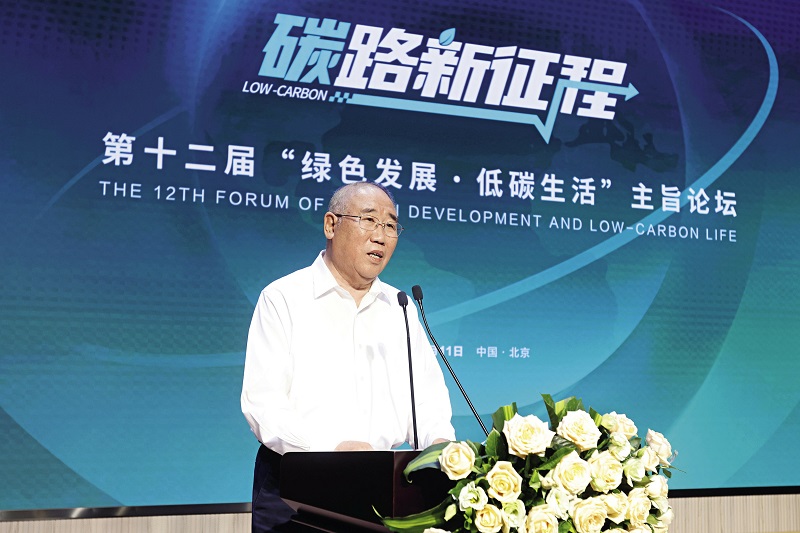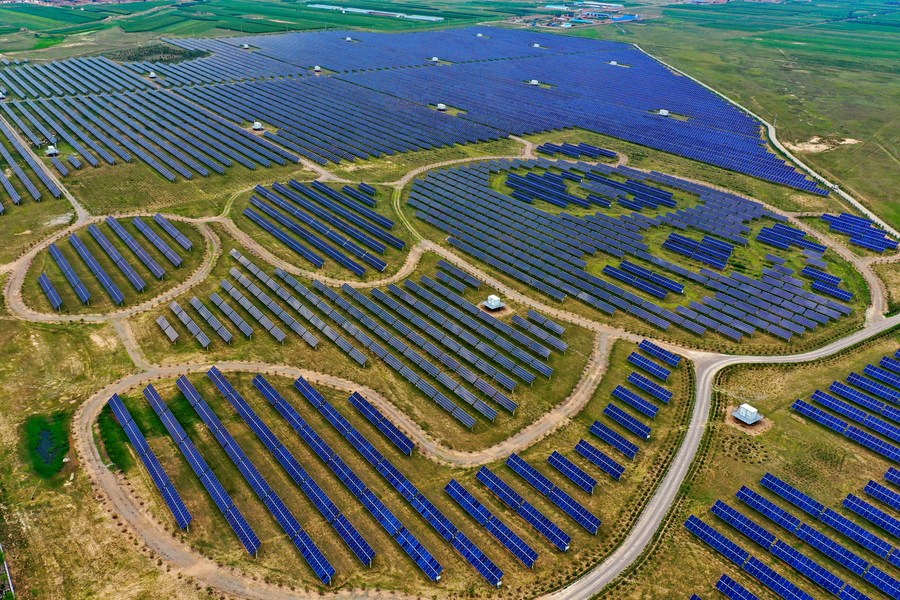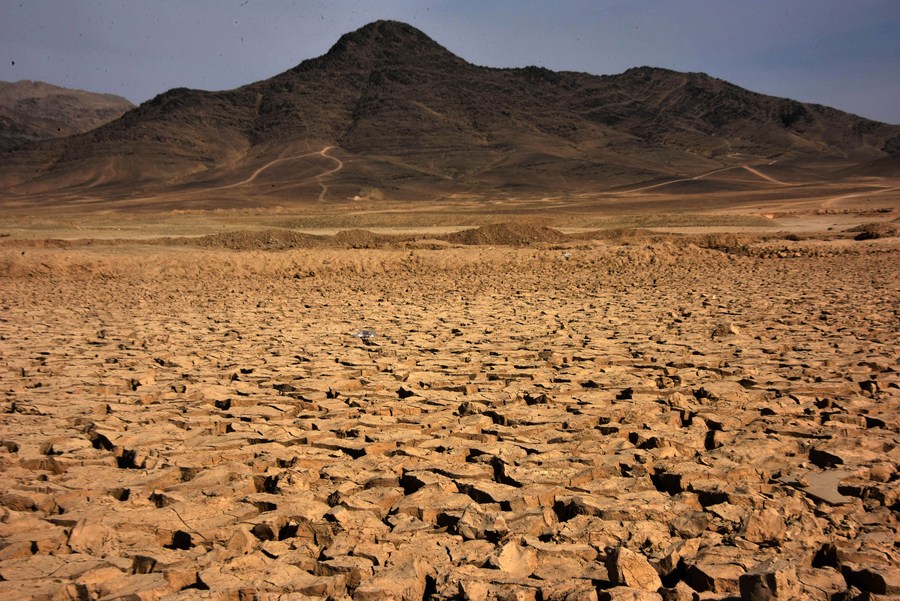COP26, All Eyes On

All parties should guard against moves to politicize technological cooperation and trading, aiming to tackle climate change and boosting green and low-carbon development.
The 2015 United Nations (UN) Climate Change Conference held in Paris, France, culminated in the landmark Paris Agreement, which set out a clear post-2020 climate plan for the world. It established the principle of equity and common but differentiated responsibilities and respective capabilities, in the light of different national circumstances; set a target of limiting temperature rise to well below 2 degrees Celsius, preferably to 1.5 degrees Celsius, and fostering low-emission, climate-resilient and sustainable development; agreed on Intended Nationally Determined Contributions to the global response to climate change; decided to periodically take stock of the implementation of the Paris Agreement to push various parties to strengthen climate mitigation actions; established a framework to improve the transparency of actions and support; called for a balance between support from developed countries in finance, technology and capacity building, and climate actions by developing countries; and decided the establishment of a global carbon emission trading exchange.
It is now an irreversible trend to turn the Paris Agreement into a reality and realize transformation toward green and low-carbon development worldwide. The 2021 UN Climate Change Conference, also known as COP26 held in the Scottish city of Glasgow in early November, is of vital importance for countries to continuing climate actions, strengthening international cooperation, and implementing the Paris Agreement. COP26 mainly discusses the following agendas.

Global long-term targets
Frequent weather extremes in some parts of the world, such as scorching heat waves, flooding and droughts, further highlight the reality that climate change has been threatening the survival and development of the entire humanity. Some countries are trying to revise the temperature rise target set in the Paris Agreement and push participating parities to agree on an absolute 1.5-degree target. The target set in the Paris Agreement was based on both science and rules. It took the urgency and severity of global warming mitigation and adaptation into consideration and reflected the principle of inclusiveness and balance. A report by the World Meteorological Organization showed that the globe was 1.2 degrees Celsius warmer in 2020 compared with the pre-industrial levels. Limiting global temperature rise to below 2 degrees Celsius is a goal all participating countries should realize, and containing it below 1.5 degrees Celsius is an ideal target.
China and the United States held thorough discussions on this matter and reached a consensus in the China-U.S. Joint Statement Addressing the Climate Crisis released in April 2021. “The two sides recall the [Paris] Agreement’s aim in accordance with Article 2 to hold the global average temperature increase to well below 2 degrees Celsius and to pursue efforts to limit it to 1.5 degrees Celsius. In that regard, they are committed to pursuing such efforts, including taking enhanced climate actions that raise ambition in the 2020s in the context of the Paris Agreement, with the aim of keeping the above temperature limit within reach and cooperating to identify and address related challenges and opportunities.” The joint statement recognized the target and principle of the Paris Agreement and provides a solution to the difference in the target for global temperature rise.
According to a special report on the impacts of global warming of 1.5 degrees Celsius above pre-industrial levels by the Intergovernmental Panel on Climate Change, said that limiting warming to 1.5 degrees Celsius implies reaching net zero carbon dioxide emissions globally around 2050. The Net Zero by 2050: A Roadmap for the Global Energy Sector released by the International Energy Agency noted, “Countries do not start in the same place or finish at the same time: advanced economies have to reach net zero before emerging markets and developing economies, and assist others in getting there.” The conclusion is fair as it is based on science and facts. To go carbon neutral globally by 2050, developed countries should reach the goal before 2040 and realize negative carbon emissions by 2050. They should also provide sufficient support in funding, technology, and capacity building to developing countries in achieving the goal.

Global carbon emission trading market
A global carbon emission trading market and carbon pricing mechanism are conducive to lowering the cost in reducing carbon emissions, increasing carbon emission actions, and boosting technological innovation and sustainable development. The key in building a global carbon emission trading market is to ensure the intactness of the environment and avoid double counting of carbon emission quotas between the seller and the buyer. Participating parties have reached a political consensus on these fundamental principles, but have some disagreement over technical issues. They should accelerate the pace of negotiations and ensure that a roadmap to the targets of the Paris Agreement could be made at COP26 in Glasgow.
The European Union (EU) proposed the Carbon Border Adjustment Mechanism (CBAM), planning to levy unilateral carbon tax on importers to the EU starting in 2023 to prevent carbon leakage. This goes against the principle and guidelines of the UN Framework Convention on Climate Change and the Paris Agreement.
The participating parties should establish a global carbon emission trading market under a multilateral framework to ensure the intactness of the environment, avoid double counting, prevent carbon leakage, and maintain fair trading. With a global carbon emission trading market in place, it is unnecessary to implement the CBAM measures. In addition, the implementation of the CBAM measures involves the counting of the products’ carbon footprints, which is very complicated and has uncertainty.

Funding for climate change mitigation and adaptation
According to estimations by the UN, the world would need around US $92 trillion to realize the target of controlling global warming set in the Paris Agreement. China estimated that it would take more than RMB 130 trillion (about US $20 trillion) for the country to peak carbon emissions and go carbon neutral.
The leverage effect of public funds is of vital importance. It is necessary to encourage financial institutions and the private sector to invest in the endeavor. Developed countries should fulfill their obligation of providing US $100 billion every year before 2020 and contributing new, sufficient and predictable funding support after 2020 as set out in the UN Framework Convention on Climate Change and the Paris Agreement. Estimates by international organizations, including the Organization for Economic Cooperation and Development, showed that developed countries only provided around US $70 billion.
COP26 should make sure that developed countries live up to their commitments, which is critically important to developing nations and is a matter of mutual trust and the effectiveness of multilateral mechanism. In addition, there should be a benefit sharing mechanism based on the global carbon emission trading market so that long-term, stable, and sustainable funding can be ensured to help developing countries with climate mitigation and adaptation and capacity building.
As a developing country, China will continue South-South cooperation in mitigating climate change and provide assistance and support to peer developing countries within its capacity. Over the last years, China has earmarked a cumulative RMB 1.1 billion (about US $170 million) to South-South cooperation in tackling climate change. It donated energy-saving and new-energy products and equipment to almost 40 countries, helped other countries launch meteorological satellites, and provided training sessions on climate change to nearly 1,500 officials and technicians in 120 developing countries.

Technological innovation and cooperation
Carbon neutrality will never be achieved with only current technologies. Innovation in technology and mechanism is essential. Reports by international agencies, including the International Energy Agency, noted that in order to go carbon neutral globally, at least half of the necessary technologies would be those newly developed and applied in the future.
Therefore, the mechanisms for technological development and cooperation under the UN Framework Convention on Climate Change and the Paris Agreement should be put into action. They should play their due roles. Effective mechanisms should be established to encourage technological innovation at bilateral and multilateral levels, ensuring that the intellectual property is protected and technology is transferred. All parties should guard against moves to politicize technological cooperation and trading, aiming to tackle climate change and boosting green and low-carbon development.
Under the direct leadership of Chinese President Xi Jinping, China has made historic and fundamental contributions to the signing and implementation of the Paris Agreement. The country is a major participant, contributor and forerunner in advancing ecological progress worldwide.
No matter how the international landscape changes, or what policies and stance other countries adopt, China will stay committed to multilateralism, work with various parties to advance the full implementation of the Paris Agreement, and contribute Chinese solutions and wisdom to building a global system for climate governance that upholds equality, fairness, and win-win cooperation.
 Facebook
Facebook
 Twitter
Twitter
 Linkedin
Linkedin
 Google +
Google +










